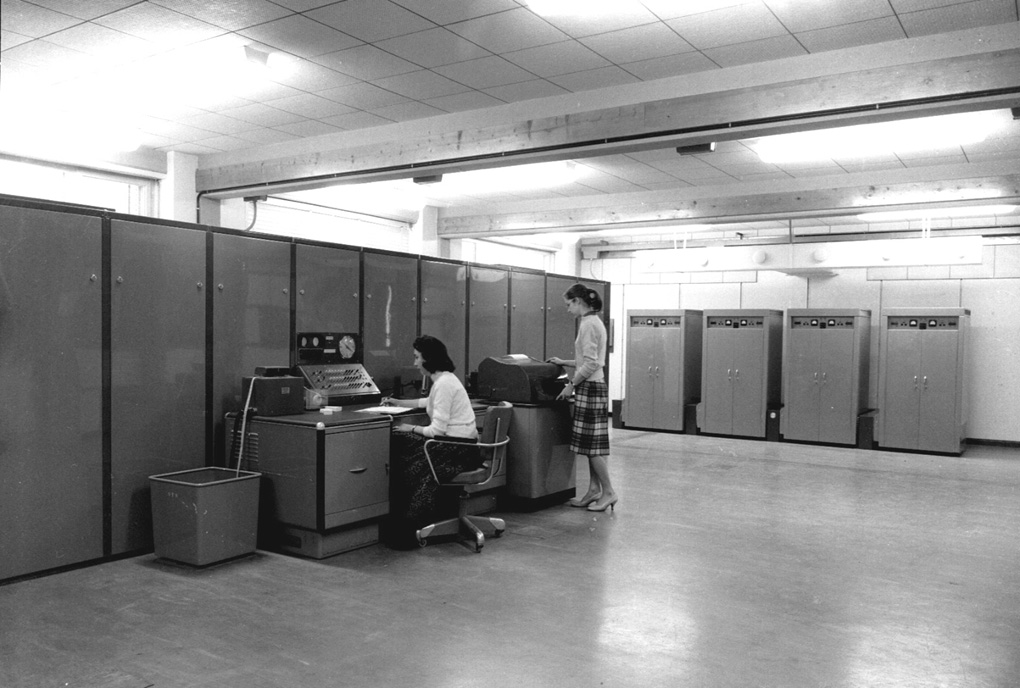CERN installs its first electronic computer: The Ferranti Mercury

CERN's first computer, a huge vacuum-tube Ferranti Mercury, was installed in 1958. It was one million times slower than today's large computers. Though the Mercury took 3 months to install – and filled a huge room – its computational ability didn't quite match that of a modern pocket calculator. "Mass" storage was provided by four magnetic drums each holding 32K × 20 bits – not enough to hold the data from a single proton-proton collision in the Large Hadron Collider. The Mercury ran a simplified coding system called Autocode – a type of programming language with a limited repertoire of variables.
At the end of its career the Mercury was connected online to the Missing Mass Spectrometer experiment. In 1966 it was shipped to Poland as a gift to the Academy of Mining and Metallurgy at Cracow. Although it was quickly taken over by transistor-equipped machines, a small part of the Mercury remains in the CERN IT department. The computer's engineers installed a warning bell to signal computing errors – the bell is mounted on the wall in a corridor of building 2.
See video: "Computing at CERN in 1965" (features the Ferranti Mercury)
| Technical specifications |
|---|
|
FERRANTI Mercury |